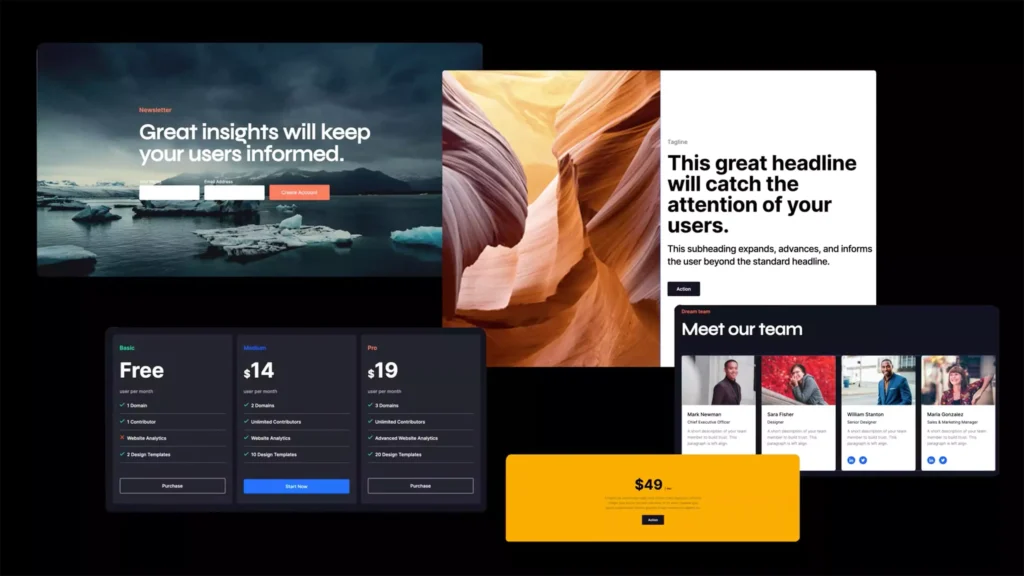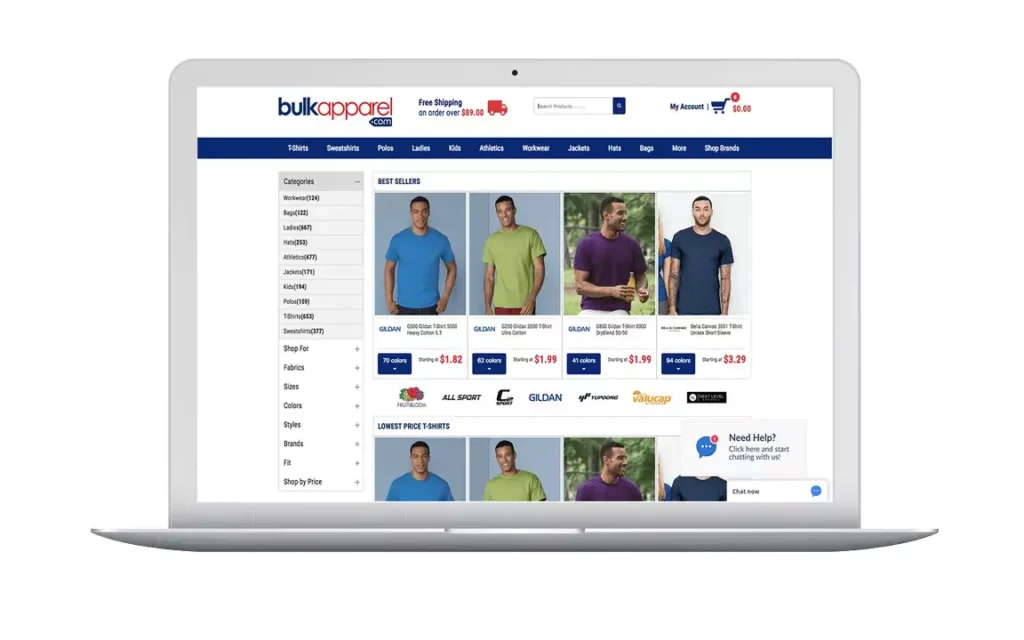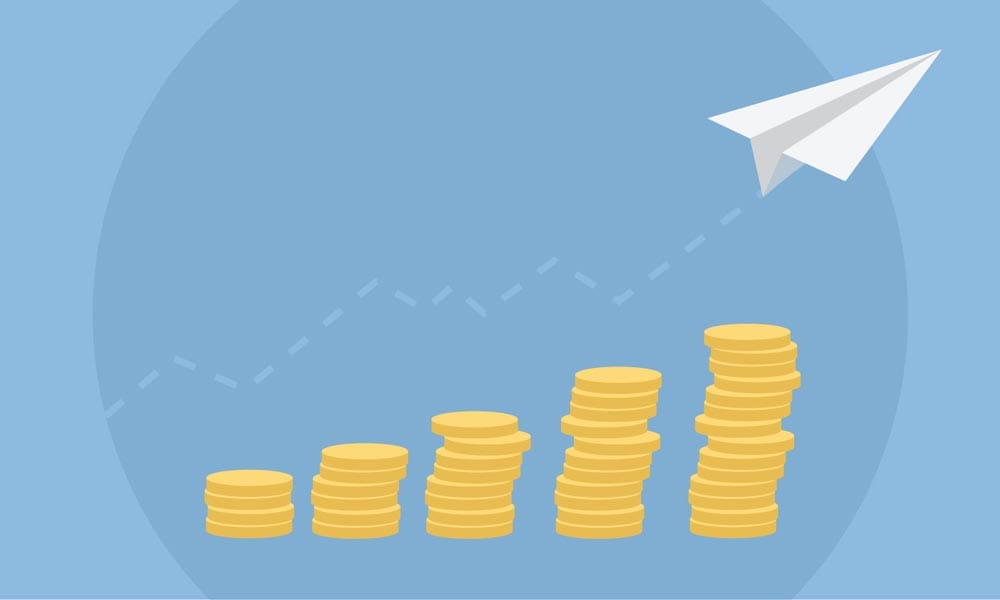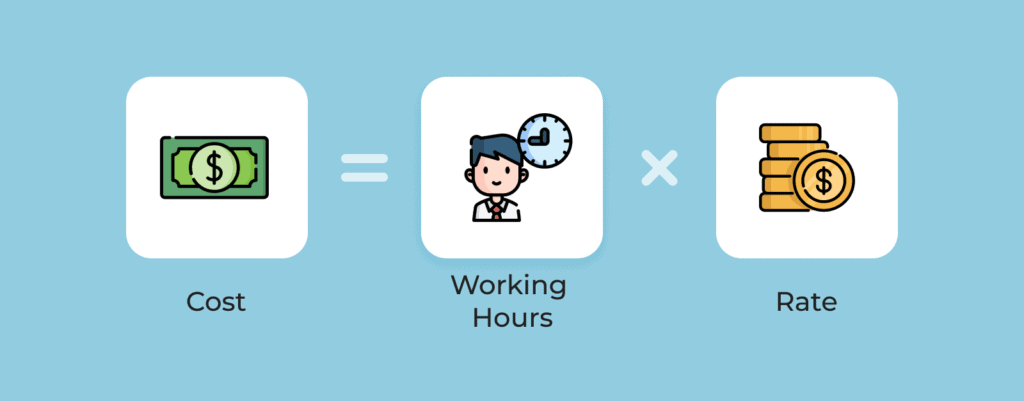The True Cost to Design a Website in 2024
Building a website can be an exciting yet daunting task, especially when it comes to determining the costs involved. With so many options for platforms, features, designers, and developers, how do you know what a reasonable amount to invest in your online presence is? This comprehensive guide on the cost to design a website in 2024 will walk you through the key factors influencing pricing, provide average industry rates, and equip you to create the site you need within your budget.
Table of Contents
What Goes into the Cost of Building a Website?

Before looking at actual dollar amounts, it’s essential to understand the main elements that make up the cost of creating a fully functioning website:
Domain Registration and Hosting
You'll need to purchase a domain name and web hosting services to claim your spot on the web and allow people to access your site 24/7. Most basic shared hosting plans start around $5 per month. The domain will be another $12-15 on average per year.
Content Creation
The pages, blog posts, videos, photos and other content make up your website. This can be handled in-house or outsourced to freelance writers and designers at various rates.
Site Design and Development
You combine visual design and technical elements through a CMS platform like WordPress. Options range from dragging and dropping themes and plugins to having custom site architecture and features developed from scratch. As you'll see below, industry averages for design and dev work range widely.
Maintenance and Upgrades
Keep your site fast, secure, and updated over time with patches, enhancements, and new features. Most basic plans start at around $500 per year.
Consider each element in your planning process when estimating how much it will cost to build your website. The totals can add up quickly!
Average Cost to Design a Website
Now that you know the main components of website project pricing, what are some typical price ranges? Professional services and features always vary, but these ballpark figures represent what most small businesses and organisations can expect to invest based on industry research:
- Essential 5-page website built with WordPress: $5,000 – $15,000
- Ecommerce site with average complexity: $15,000 – $50,000
- Custom-designed site with custom features: $50,000 – $150,000
- Complex web application build: $150,000+
As you can see, you can pay less than $100 per month for web hosting and choose a drag-and-drop theme for a DIY site or invest $100,000+ on a highly specialised web platform over multiple years. Most organisations will fall somewhere in the middle depending on the level of complexity, customisation and ongoing marketing needs.
We’ll explore the contributing factors in more detail now.
Factors that Influence Cost

Why such a wide range in potential pricing? And how can you plan your budget accurately? These key factors have the most significant influence on what it will cost to design your website:
Complexity and Customisation
The more complex features and functionality needed, the more development work involved:
- Simple 5-8 page static brochure site vs. 100+ page content-managed site
- Basic contact form vs. complex multi-step application workflow
- Pre-made theme vs. entirely custom design and layout
- Standard integrations vs complex custom application build
Custom e-commerce builds with advanced features will be expensive, while a primary marketing site with minimal pages and off-the-shelf components will be much more affordable.
| Site Type | Avg Cost Range |
| Brochure Website (5 pages) | $1,000—$6,000 |
| Small Business Website (10 pages) | $5,000—$10,000 |
| Online Store (25 products) | $6,000—$18,000 |
| Large Ecommerce Site (500+ products) | $50,000—$100,000+ |
| Web Application MVP | $10,000—$50,000 |
| Marketplace Platform | $75,000—$250,000+ |
Maintenance and Hosting
The long-term expenses associated with updates, security, backups, speed optimisation and infrastructure must be accounted for as well:
- Shared hosting vs dedicated server
- Monthly vs annual contracts
- Essential support vs premium support packages
- Number of sites hosted on account
- Email accounts, storage space needs
Plan for 10-20% of initial build cost per year for ongoing management and hosting.
Platform and Languages
The technology foundation and languages used to create the site influence both upfront and ongoing costs:
- Open source (WordPress, Joomla) vs proprietary systems
- Shared hosting vs cloud hosting vs serverless
- HTML/CSS vs JavaScript vs ASP.NET vs Ruby on Rails
- Database types: MySQL, MongoDB, etc.
Open-source platforms like WordPress are cost-effective, especially for most marketing sites and blogs. Specialised apps may require more advanced languages and infrastructure, though.
Location and Experience Level of Team
Just like any professional service, experience, location and overhead costs impact pricing:
- Freelancer vs agency rates
- Entry-level vs specialised senior talent
- Low cost-of-living area vs significant metro area
- Full-service agency vs individual contractor approach
Budget $60-$150 per hour for professional services based on experience levels and services included.
You can create a realistic website cost estimate and budget by carefully evaluating each area for your project and business needs.
Types of Websites and Their Costs

The cost to design a website can vary greatly depending on the size, purpose and functionality you need. Here is an overview of standard website types and typical price ranges:
Basic Informational Site
This type of simple site provides basic information about your business or organisation. Key features include:
- 5-15 pages with text and images
- Contact and location information
- Custom graphics/logo
- Responsive design
- Search engine optimisation
Cost range: $500 – $5,000+
Ecommerce Site
An online store allows customers to buy your products or services directly. Features include:
- Full product catalog
- Shopping cart
- Payment processing
- Inventory management
- Shipping calculations
- SEO
Cost range: $3,000 – $150,000+
Membership Site
Members pay a subscription fee to access premium content like courses, forums and multimedia. Features include:
- Payment gateway
- Different membership tiers
- Multimedia content
- Discussion forums
- Responsive design
Cost range: $1,000 – $100,000+
Business Website
A site that establishes credibility for a company and engages customers often has advanced functionality like:
- Blogging platform
- Lead capture forms
- Complex data filtering
- Automated emails
- Integrated social media
Cost range: $2,000 – $250,000+
The exact cost depends on the number of pages, custom features and integrations needed.
Detailed Cost Breakdown
To give you a better idea of standard pricing structures for custom website design services, let’s break down the significant components piece by piece:
Design Deliverables
- Brand Style Guide: $500+
- Wireframes and Sitemap: $1,500
- Graphic Design Concepts: $1,000+
- Final Homepage Design: $1,500
- Interior Page Layouts (3): $1,500
- Custom Photography: $2,000 per day
Development and Content
- Content Strategy Plan: $2,500+
- Copywriting (5 pages): $1,000+
- Website Content Population: $30 per page
- Custom Plugin Development: $5,000+
- Complex Feature Build: $7,500+
- Newsletter Signup Integration: $1,500
- Contact Form: $500+
- Appointment Scheduling: $2,500
- Custom Illustrations: $500+ each
Technical Implementation
- WordPress Theme Installation: $1,500
- Custom Theme Development: $5,000+
- SEO Optimization: $1,500+
- Google Analytics: $500
- Support & Maintenance: ~20% of build cost per year
As you map out the functionality and components needed for reaching your business goals, use ranges like these above to estimate costs for procuring professional services. The totals add up fast! But now, you will have a strategic, customised implementation plan catering to your brand and audience.
How Payment Structures Impact Overall Fees

How your web design firm charges for their services also affects your total project cost. Here are four standard pricing models:
Flat Rate Bids
You are quoted one set fee upfront for the entire agreed-upon scope of work. Benefits include easy cost projections and budgeting. The downsides are that changes in project scope can incur expensive change order fees, and firms may overestimate fees to hedge against unforeseen complications.
Time and Materials
You pay hourly or daily rates for actual time worked by each team member. The benefits are that costs directly align with the effort expended. Downsides can be tricky open-ended estimates if the full scope is unknown upfront.
Fixed Bid Plus Hourly
Project bid for well-defined scope of work plus hourly fees for any scope changes/additions. This model aims to provide both flat rate and hourly pricing pros.
Value-Based/Retainer
Like a lawyer, you pay an ongoing monthly fee for a set bundle of services. This pricing model incentivises efficiency and benefits longer-term relationships.
Awareness of each model's pluses and minuses allows you to negotiate optimal terms as you evaluate and select an agency.
What is the Cheapest Option?
Looking to keep costs down? You do still have options:
- DIY Site Builder: $100-$300 year
- Pre-Made Theme: $59 one time
- Single Page Site: $2,500+
- Freelancer Rates: $40-$100 per hour
- Basic Shared Hosting is $5 per month
- No Original Photography
Using an easy-to-use CMS platform like WordPress with pre-made themes, very few pages and primary contact forms can allow you to create a simple, functional site for less than $5,000 in many cases. You won’t benefit from strategic, personalised design, but it may suit primary brochure sites and blogs well.
| Platform | Setup | Monthly Hosting | ease of use | Scalability |
| WordPress | $500+ | $25+ | Medium | Excellent |
| Shopify | $0+ | $29+ | High | Very Good |
| Squarespace | $0 | $12+ | Very high | Good |
Allocating Your Website Budget
Building a comprehensive website that achieves your communication and conversion goals while representing your brand effectively is a significant investment for any organisation. Treat your site like a robust revenue-driving asset within your marketing budget.
Industry data shows most organisations spend between $9,000 – $45,000+ on initial website design and development, followed by $5,000+ per year in ongoing investments as needs grow and evolve.
While freelancers, DIY site builders and pre-made themes can help lower entry costs, partnering with a full-service firm provides the strategic value, customisation and expansion flexibility needed for long-term success. Expect to invest $20,000 to $150,000+ for larger, more complex projects.
Plan a budget that allows for robust design, engaging content, analytics, lead integrations and multi-channel management while leaving room for ongoing optimisation and enhancement over the 3+ year lifespan of modern digital platforms. Your website is no longer a one-time sunk cost but a critical and evolving business investment.
Tips to Reduce Your Overall Costs
Here are a few pro tips for keeping website costs under control:
- Audit and consolidate any existing orphan sites before migrating content to a fresh build
- Take advantage of free resources such as fonts, stock photos and automation tools at the start
- Carefully scope must-have features upfront vs parking extras on a wishlist
- Start with a simple content website and phase in advanced ecommerce components over time
- Do regular website maintenance such as content updates, speed optimisations and feature enhancements in-house once the site is built
- Negotiate discounted rates for bundled packages, prepayments or annual contracts over hourly billing.
Factors That Reduce Website Building Costs

If you have limited resources but still want quality outcomes, utilising the following tactics can decrease price points across any budget level:
- Seek Less Customisation – Leverage pre-made templates, themes and stock media instead of original designs.
- Narrow Focus – Concentrate on your most vital features and conversion goals vs tons of nice-to-haves
- Use Free Resources – Many CMS platforms like WordPress and tools like Canva offer free options
- Do Content Yourself – DIY copywriting and content population to save on writing fees
- Minor Team – Hire freelancers or boutique firms that charge less per hour than big agencies
- Take Advantage of Sales – Development shops often run holiday promotions or bundle packages
- Get Quotes From Multiple Vendors – Competition breeds better pricing, so shop around
- Outsource to Offshore Talent – Lower payscales in some countries mean reduced fees
- Go with Startups – Newer, hungry companies charge less as they build their portfolio
- Student Designers – If budget is very tight, student projects may work for more straightforward sites
While tapping these avenues lowers project costs, it also impacts overall quality and capabilities. But for bootstrapped organisations and early-phase projects, these shortcuts help stretch limited dollars while still ticking core boxes, with room to upgrade later.
Building Efficiently Over the Long-term
The most cost-effective approach starts with a thoughtful strategy, design and architecture that supports easy additions over time. Account for inevitable changes in needs by implementing in phases, creating with:
- Core content pages and blog news hub
- Campaign microsites
- Integrated lead gen workflows
- Complex custom apps and features
This agile, modular approach allows you to spread significant investments over years as dollars become available rather than overspending upfront and requiring a complete rebuild shortly after launch. Think of your website ecosystem as a dynamic digital asset rather than a one-and-done project. There are always opportunities to enhance and evolve!
Recap: Key Questions to Define Your Budget
Figuring out the right web design investment point takes research and self-reflection. Here are some questions that help set practical spending parameters:
What are your key goals and metrics of success?
Driving ecommerce revenue? Collecting leads for sales? Establishing your brand? Defining key outcomes sets priorities.
What functionality and integrations are genuinely essential?
Limit nice-to-haves vs must-haves. Find the 80/20 solutions.
Who is your target audience?
Understanding user expectations and technical prowess dictates required sophistication levels.
What technical resources can you contribute?
If you can handle content updates, limited coding tweaks, etc, you rely less on an agency’s maintenance fees.
What existing internal tools/software must be integrated?
Know integration costs upfront for scoping accuracy.
How significant is your current digital presence?
Are they migrating lots of old content? Large product catalogues? More data means more migration work.
What specialised digital skills does your team lack?
Be honest about your capability gaps that necessitate external help.
What is the realistic budget range to meet core goals?
Research options at varying investment points and pick your sweet spot between needs and means.
Asking these strategic questions gives you the proper context for collecting bids, comparing vendors and contract terms, and maximising your web project investment returns.
Key Takeaways on the Cost of Design a Website
So, in summary, keep these guidelines, ranges and insights in mind when budgeting to build your site:
- Websites range widely from $5k – $150k+
- Over 50% of the cost is design and content strategy
- Complexity and custom features increase pricing
- Plan for ongoing hosting, maintenance and marketing costs after launch
- Leverage platforms like WordPress to reduce backend costs
- Build in phases over time for maximum flexibility
- Treat as a dynamic business investment vs a one-time expenditure
The cost to design a website in 2024 is more than just the launch price tag. Taking a holistic, long-range view gives your digital presence the best chance to reflect your brand while delivering ROI far into the future.
Next Steps for Your Project
Now that you have a solid understanding of industry averages and pricing structures, here is a helpful action plan:
- View custom website design portfolio examples to inspire ideas.
- Request a Free Consultation with our team.
Our expert staff can assess your online presence and business objectives and make data-backed recommendations for technical, design and content solutions tailored to your needs. Paired with a detailed project plan and pricing proposal, you’ll have everything you need to kickstart an impactful, results-driven website initiative.
Frequently Asked Questions
Here are answers to five of the most frequently asked questions we get about website project costs:
What does a 10-page website cost?
For a custom-designed and developed WordPress site with around ten content pages, plan around $15,000-$30,000+ on average. Cost will be influenced most by the types and number of custom features needed.
How much should I pay for website hosting?
Basic shared hosting starts around $5-$10 per month. Upgraded managed plans with more support, average $40-$100 per month based on traffic, storage space and other needs like dedicated IPs or servers. After your site is built, make sure technical support is included!
Can I build a website for $500 or less?
For a basic single-page landing page or blog with minimal pages, forms and no custom features, $500 is possible. However, factoring in copywriting, images, and design work will quickly push most real business sites into the thousands.
What percentage of overall should I allocate for web design and content?
Industry data shows that design, copywriting and content typically make up 50-60%+ of total website project budgets. This asset creation process is a valuable long-term investment that pays off in brand distinction, credibility and audience engagement.
How much traffic should my site get for $ 5-$ 10k?
It depends greatly on your industry and the return timelines that make sense. Some organisations need at least 30,000 to over 100,000 unique visitors per month to justify spending $5k+ on a professional website. Defining your target metrics and ROI helps size budgets.
